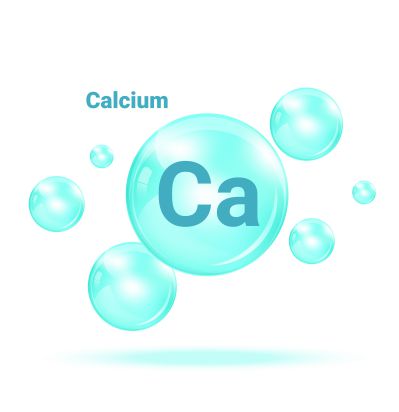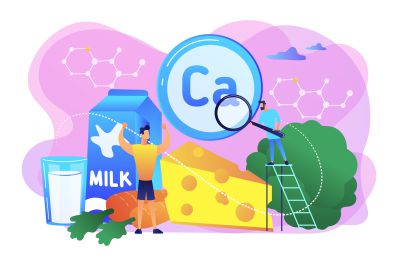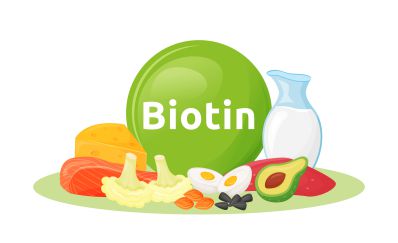Calcium is one of the most important minerals of human body which acts as the main constituents of bones and teeth. Calcium also helps in muscle contraction, transduction of nerve impulses, hormone secretion and performs many other important functions of body. Several researches have shown that adequate intake of calcium is very much important especially in early adulthood to obtain maximum level of bone mass that helps to prevent osteoporosis in later age (Marcinow et al., 2017). Calcium deficiencies are also very common especially among middle aged person (females are more prone) and causes various complications such as bone and joint disorders, hypertension, cardiac problems, impaired muscle contraction and abnormalities in nervous stimulus transduction. Several epidemiological studies have suggested that fortification of foods and water with calcium is an important remedial action to overcome calcium deficiency and helps to promote bone health (Cormick and Belizán, 2019).
Five important facts regarding calcium
- Among all minerals, calcium is considered as the most abundant trace element of human body
- About 1 to 1.5 kg of calcium is present in an adult body among which 99% of calcium is found in bones and teeth
- About 1% of calcium is found outside the skeletal muscle and plays several important biochemical roles
- The normal range of serum calcium is 9 to 11 mg per dl among which about 5mg of calcium per dl is present in ionized form, which is considered as the functionally active form of calcium in human body
- It is essential to consume Vitamin D along with calcium as it helps to increase calcium absorption

Sources
Foods rich in calcium are listed below –
- Milk
- Soybean
- Yogurt
- Cheese
- Tofu
- Sesame seeds
- Almond
- Fishes such as sardines, salmons (one can eat the bones of this kind of fish)

- Coriander leaves
- Broccoli
- Cabbages
- Egg yolk
- Beans
- Nuts
Recommended Dietary allowance
- Adult men and women should consume 600 to 800 mg of calcium per day to fulfill its requirements
- Pregnant women, lactating women and women of post-menopausal phase have an increased demand for calcium. It is better to consume 1200mg of calcium daily to meet the increased requirement
- Boys and girls between the age group of 1 to 18 years should consume 0.8 to 1.2g of calcium daily
- Whereas it is beneficial for infants (0 to 12 months of age) to consume 300 to 500 mg of calcium per day
Factors affecting calcium absorption
Proper absorption of calcium is very much important as calcium is only able to serves its function when it gets absorbed completely. Generally, calcium is absorbed in duodenum and requires two hours for completing the absorption process.

The below table will show an overview of factors interfering with calcium absorption –
| Factors increases calcium absorption | Factors decreases calcium absorption |
|
|
One should consider all the above stated factors for maximizing their calcium absorption and utilization.
Health benefits
Role on bone and teeth formation
- Calcium is the principal constituents of bone and teeth. It binds with phosphorus and forms calcium phosphate, which is responsible for mineralizes bone and teeth, that enhances their strength
- During school going age, in adolescence period and in early adulthood calcium is exclusively required for contributing the development of bones. After completion of respective growth phases, when an individual stops growing then calcium is required for maintaining the bones
- It also helps to slow down the losses of bone mineral density and helps to reduces the risk of developing bone deformities

Role on muscle contraction
- Calcium is essentially required for muscle contraction as it helps to bind with troponin (a protein) which is required for initiating muscle contraction
- It also helps to activate ATPase enzyme which stimulates the interaction of muscle proteins actin and myosin and facilitates contraction
Role on transmitting nervous stimulus
- Calcium helps in transmitting nervous stimulus throughout the body
- Basically, calcium channels are present in synaptic membrane of each neurons, when nervous stimulus reaches to the synaptic end, it causes opening of calcium channel leads to entry of calcium ions in synapse. Then the calcium interacts with synaptic vesicle and helps to release neurotransmitter, which is associated with transmitting nervous impulse
Role on endocrine system
- Calcium facilitates releasing of several hormones from endocrine glands such as calcitonin, insulin, parathyroid hormone and promotes their action on target region
- It also acts as second messenger for the hormone epinephrine and third messenger for the hormone ADH (anti diuretic hormone), which helps to relay the signal received from cell receptor and stimulates the action of respective hormones

Role on blood coagulation
- Calcium plays an important role in blood coagulation by converting prothrombin into thrombin followed by the conversion of fibrinogen to fibrin, which is the foremost component required for clotting
- It has seen that blood banks use chelating compound in the bags of donated blood, which helps to bind calcium ion to prevent blood clotting in respective bags
Role on enzyme activity
- Calcium helps to activate several enzymes like lipase, succinate dehydrogenase, ATPase, and helps in their catalytic reactions
- Calcium binds with calmodulin (a protein) and the calcium calmodulin complex helps in the activation of the enzyme adenylate cyclase, which is related with the formation of cyclic AMP from ATP
Role on maternal health
- Calcium is one of the most important minerals required in pregnancy. It helps in the development of entire skeletal structure of the fetus
- It also helps to reduce pregnancy induced hypertension
- It is associated with reducing preterm births and maternal deaths
Role on cardiovascular system

- It helps to reduce hypertension
- It promotes cardiac muscle contraction and helps in proper blood circulation
- It helps to prolong systole
Role on preventing obesity
- Recent studies and researches have shown that consumption of calcium along with Vitamin D is associated with preventing obesity as it helps to increase the oxidation of fat that helps to enhance the metabolic rate leads to weight reduction (Pannu et al., 2016)
- It also helps to excrete fat through stool and helps to decrease fat concentration within body
Disease States
- Hypercalcemia (elevation of serum calcium level), is a calcium disorder, associated with hyperparathyroidism. It causes muscle weakness, lethargy, constipation, nausea, susceptibility to fractures, loss of appetite and increase in myocardial contractility
- Hypocalcemia is another serious calcium disorder characterized by reduced serum calcium level (< 7mg/dl). It is responsible for developing tetany, rickets (in children), osteomalacia and osteoporosis
So, it is desirable to consume calcium as per recommendation for preventing its life-threatening disease states and also for achieving a better life.

Source:
Cormick, G. and Belizán, J.M., 2019. Calcium intake and health. Nutrients, 11(7), p.1606.
Marcinow, M.L., Randall Simpson, J.A., Whiting, S.J., Jung, M.E. and Buchholz, A.C., 2017. Young adults’ perceptions of calcium intake and health: A qualitative study. Health Education & Behavior, 44(6), pp.898-906.
Margolis, K.L. and Manson, J.E., 2016. Calcium supplements and cardiovascular disease risk: what do clinicians and patients need to know?. Annals of Internal Medicine, 165(12), pp.884-885.
Pannu, P.K., Calton, E.K. and Soares, M.J., 2016. Calcium and vitamin D in obesity and related chronic disease. In Advances in food and nutrition research (Vol. 77, pp. 57-100). Academic Press.
Pu, F., Chen, N. and Xue, S., 2016. Calcium intake, calcium homeostasis and health. Food Science and Human Wellness, 5(1), pp.8-16.
Veldurthy, V., Wei, R., Oz, L., Dhawan, P., Jeon, Y.H. and Christakos, S., 2016. Vitamin D, calcium homeostasis and aging. Bone research, 4(1), pp.1-7.
Wimalawansa, S.J., Razzaque, M.S. and Al-Daghri, N.M., 2018. Calcium and vitamin D in human health: Hype or real?. The Journal of Steroid Biochemistry and Molecular Biology, 180, pp.4-14.
Winter, W.E., Pelletier, J.P.R. and Harris, N.S., 2020. Calcium biology and disorders. In Contemporary Practice in Clinical Chemistry (pp. 791-820). Academic Press.










